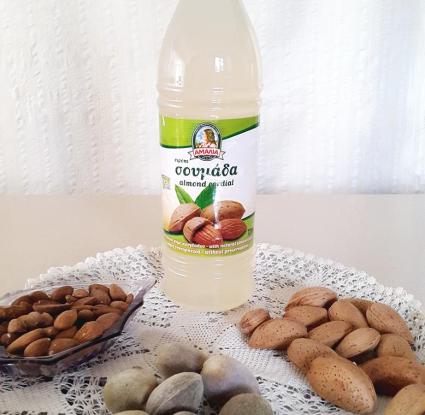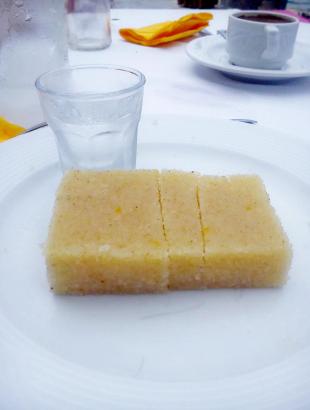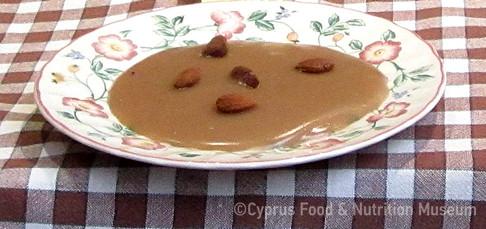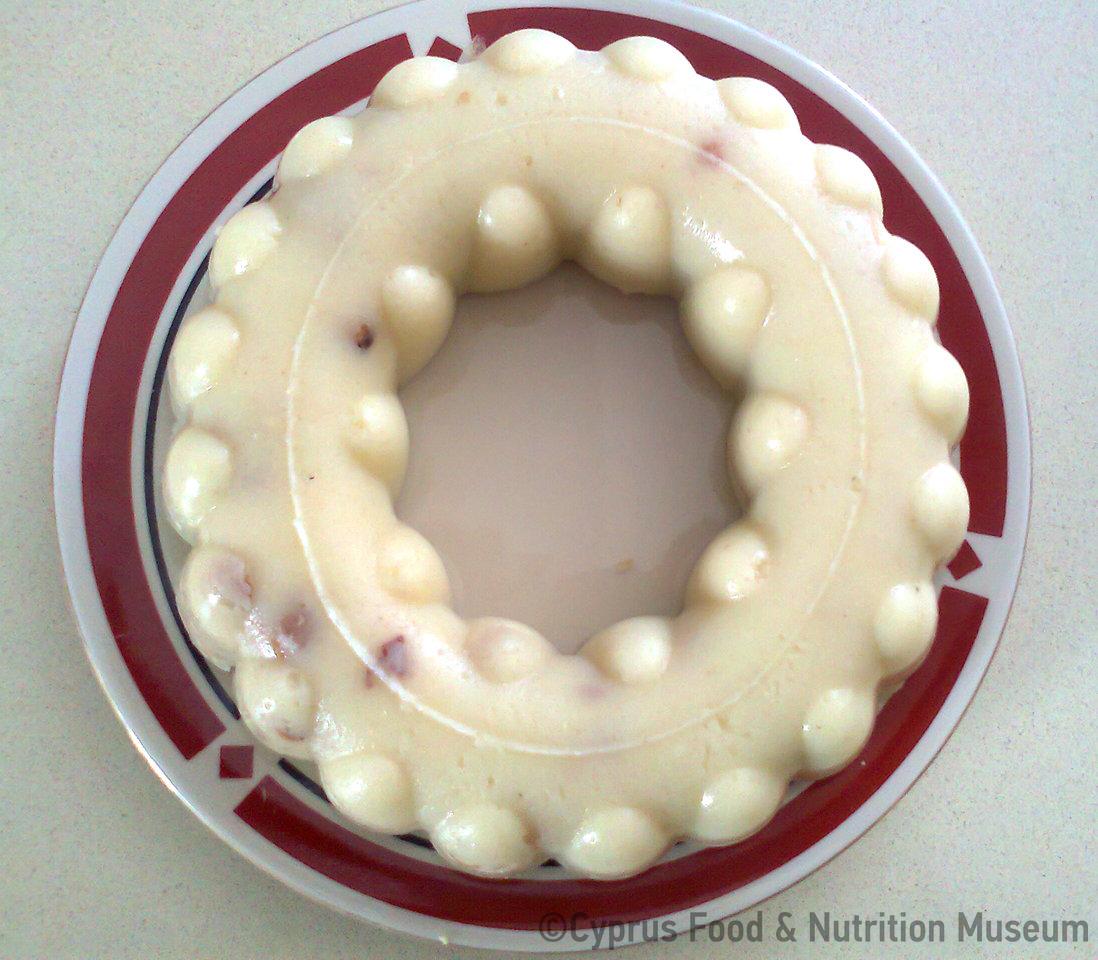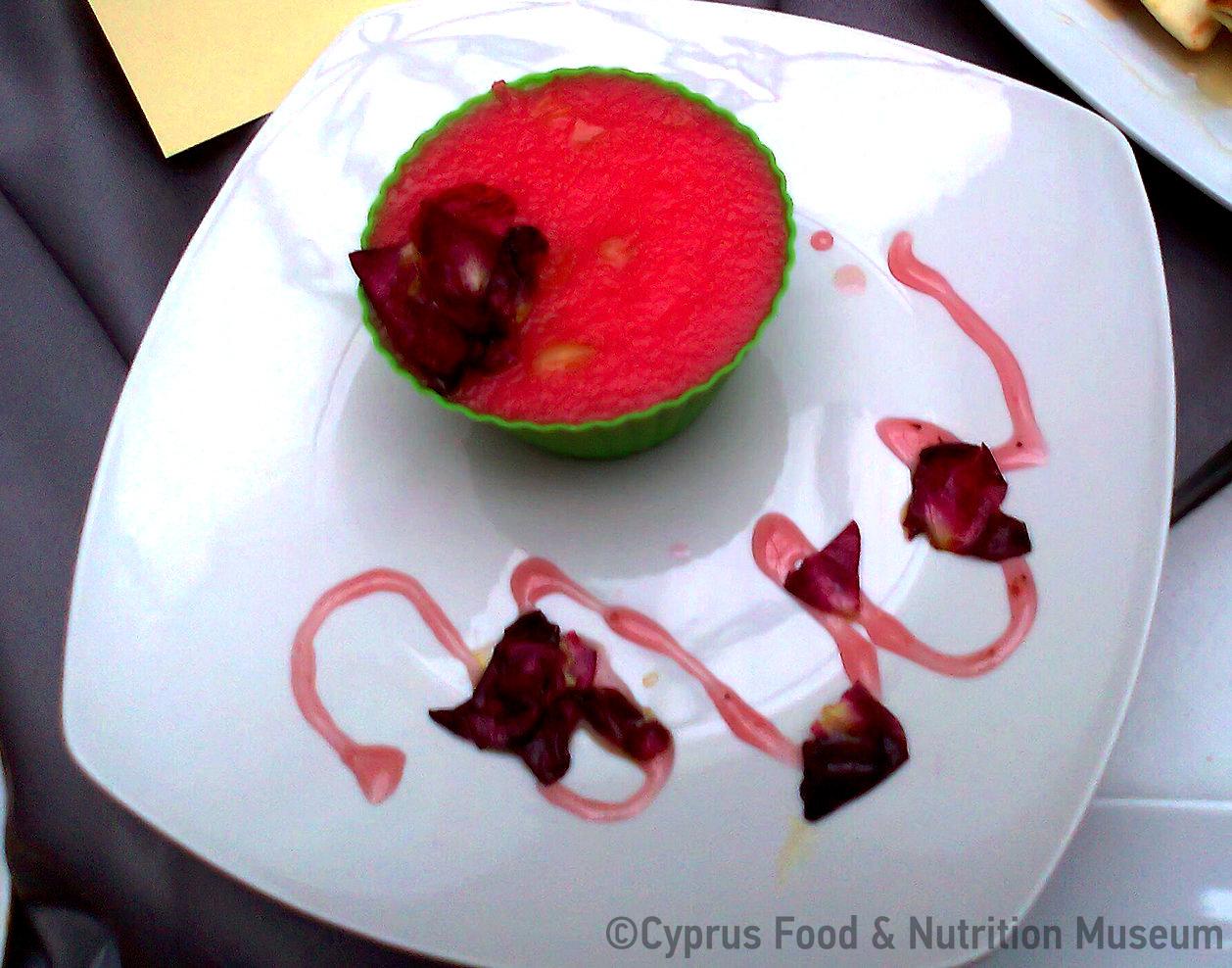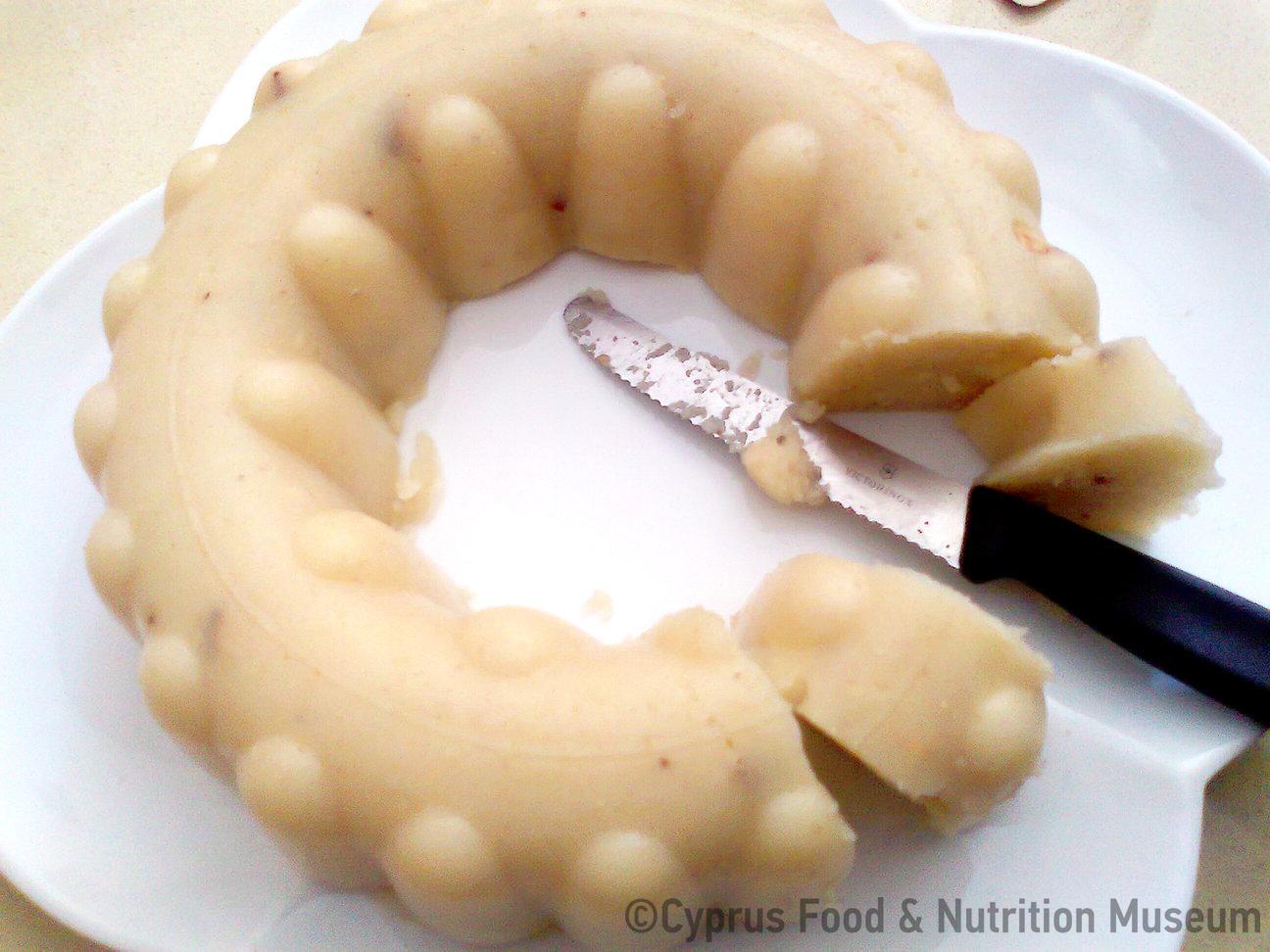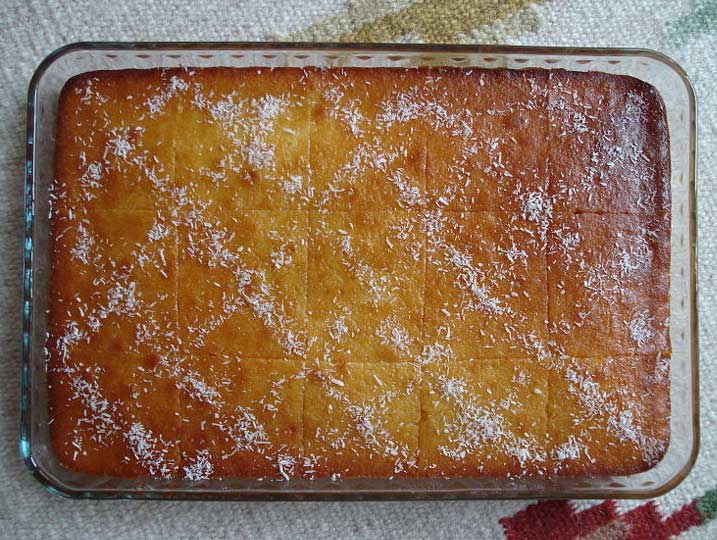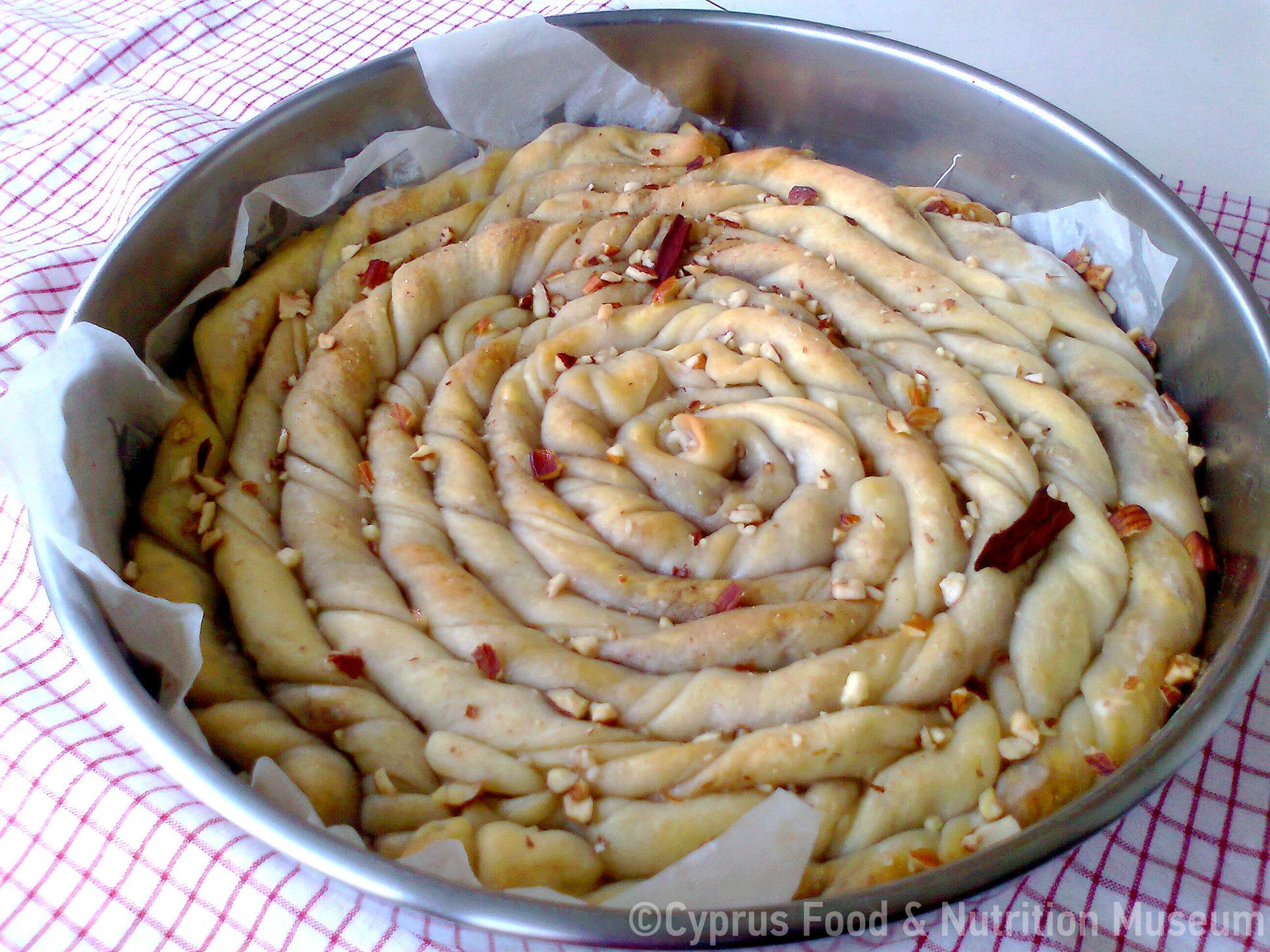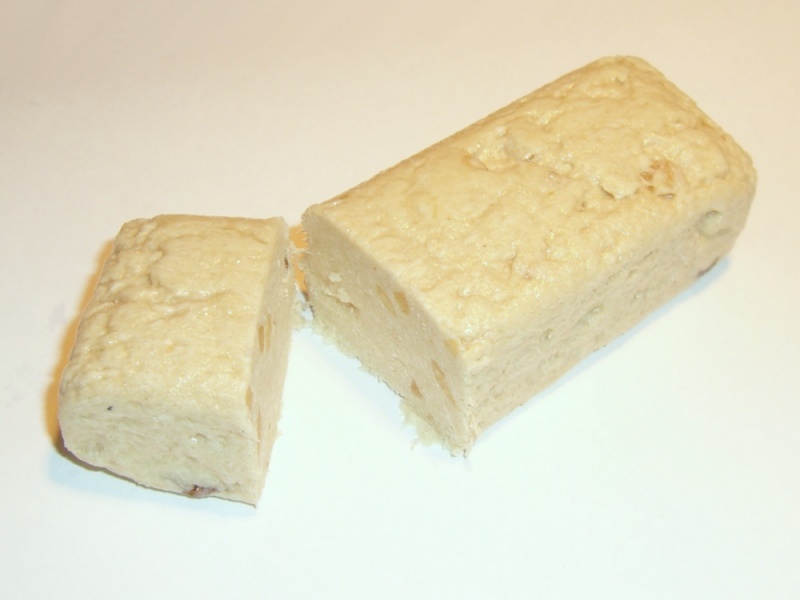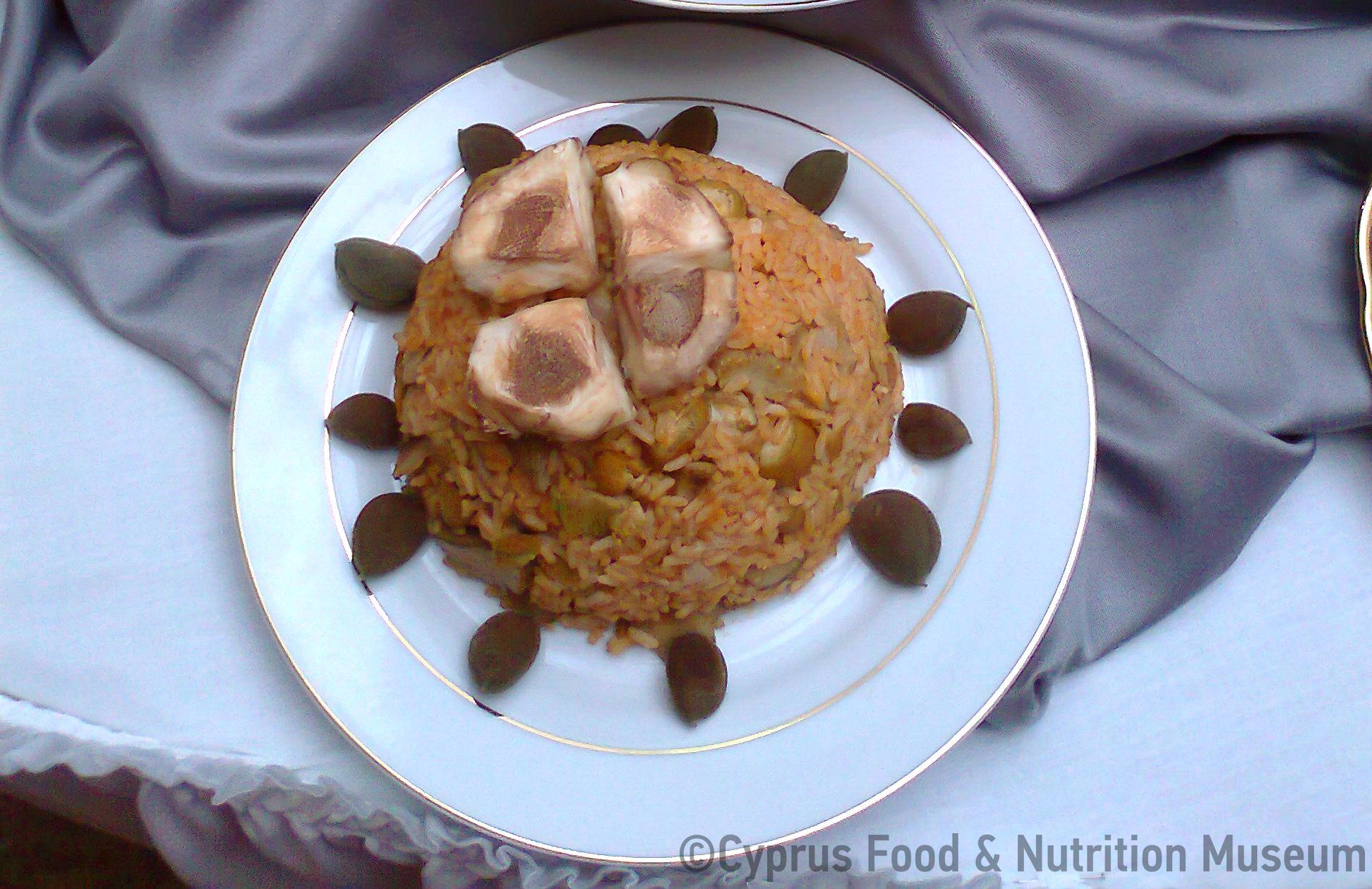The most famous halva in Cyprus, especially during the fasting period, is the pot halouva. To prepare an extremely flavourful halouva without oil, soumada, a sweet beverage made from almonds, is used.
Name - Recipe
Χαλβάς κατσαρόλας αλάδωτος με σουμάδα. Sweet made of semolina, almonds and syrup, flavoured with or either with cinnamon, cloves, mastic and rose water.
2 glasses of semolina
4 glasses of water
2 glasses of soumada
Cinnamon
ground mastic
1 glass of almonds, blanched and cut in half
In a pot, add all the ingredients and cook. Keep stirring until the mixture thickens. When done, add the almonds and stir. Transfer the halouva in a mould. When it cools down, transfer to a platter and sprinkle with cinnamon.
Cooking in a pot.
Functional and symbolic role
In the old days, when sugar was expensive, housewives used epsima (grape syrup) or honey, as they had done for thousands of years. Flour-based halva has been known since Byzantine times.
Additional information and bibliography
The most well-known halouva, especially on fasting days, is the pot halouva, which is also known as one-two-three because it has a ratio of one part semolina, two parts sugar and three parts water. Spices such as cinnamon and also roasted nuts such as almonds or pine nuts are added. Halouva requires toasting of the semolina and plenty of spices. It is also known as politikos. Halva is an Arabic word meaning sweet. A traditional variation which comes from the Greeks of Constantinople is made with milk rather than water. In Greece, I have tasted the famous Farsalon halva which is a glossy halva known as sapouné, made from rice flour and has a distinctive crust of burnt sugar. This sapouné halva and many other types were also made in the Ottoman palaces in Constantinople. (Note: Florentia Kythraiotou)
Gerasimou, M. (2004). The Ottoman cooking, 99 Palatianes Recipes, Potamos, Athens.
Koukoules, F. (1952). Byzantine Life and Culture, Volume E, Papazisis Publications, Athens.
Kythraiotou, F. (2009) Food as a reason for a relationship, University of Nicosia Publications, Nicosia.
Florentia Kythraiotou

